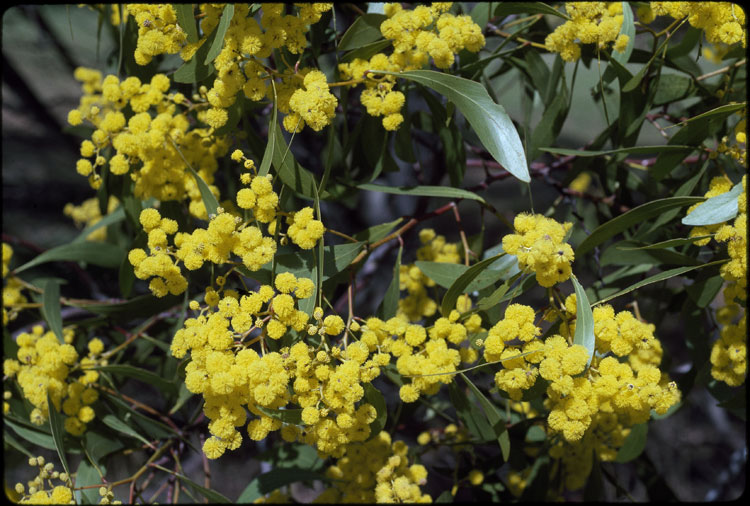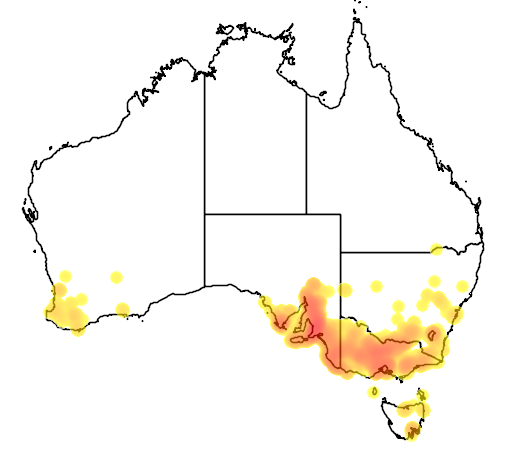Description
Common names
Golden Wattle, Green Wattle, Australian Golden Wattle, Black Wattle, Broad-leaved Wattle, Golden Wattle., Goldern Wattle, Witch.
Scientific names
Acacia pycnantha.
Family
Mimosaceae.
Genus
Acacia.
Name origin
Pycnantha, from Greek phchos, thick and compact, and anthos, flowers, referring to dense flower heads.
Rainfall
400mm.
Growth rate
Fast.
Growth height
3-8m.
Presence in Australia
Widespread in most areas west of the Hume Highway.
This specie has been identified in the following Australian states: NSW, ACT, Vic, Tas, SA, WA.
Habitat
Usually dry sclerophyll forest, Box woodland and heath. Sandy and stony soils.
Habit
Erect or spreading tree or shrub 3-8m high. Dark brown to greyish smooth or finely fissured bark and "leaves" 6-20cm long. May form thickets.
Site preference
Young plants may be frost tender, while mature plants are reasonably frost tolerant. Tolerates drought and wide range of soils. Tolerates brief waterlogging and shade, which does not suppress seedling establishment. Fire kills mature plants.
Characteristics
Short-lived. Fast-growing. Floral emblem of Australia.
Flowering
Golden-yellow, Jul-Nov. Strongly scented.
Seed collection
Early Nov to mid Jan. Frequently produces large crops.
Propagation
From scarified seed (20-64 viable seeds per gram). Pour boiling water over seeds and soak for several hours before sowing.
Regeneration
From seed after fire, or without fire in non-compacted soil. Seeds remain viable in soil for many decades. Establishes very well when direct seeded.
Shade and shelter
Useful low-level cover in windbreaks.
Land protection
Useful for stabilising soil due to fibrous roots. Legume, improves soil fertility by "fixing" nitrogen.
Fuel
Burns well and produces a hot fire, but generally too small to be useful.
Timber
Pale buff to brown. Not durable. Easily split. Bark is one of richest tannin sources in world, although rarely used commercially.
Wildlife
Small nectar-feeding birds attracted to base of "leaves". Flowers are a pollen source for native moths, butterflies and other insects. Insect-eating birds attracted. Larvae of the Fiery Jewel Butterfly feed on foliage at night. Grubs living at stem bases are food for birds, including the Grey Shrike-thrush and Black-faced Cuckoo-shrike. Gum is important food for possums such as the Sugar Glider and Squirrel Glider. Mature plants are nest sites for the Grey-crowned Babbler in Grey Box woodland. Insects attracted are important food for the Regent Honeyeater during breeding.
Koori
Gum eaten or dissolved in water with nectar to make sweet drink. Bark possibly used for medicine and fibre.
Ornamental
Attractive, free-flowering specimen with beautiful foliage. Cut out central growth when young to encourage bushiness. Unsuitable for high rainfall areas (over 1000 mm/year).
Other
"Leaves" produce gold coloured dye with alum as mordant. European settlers used gum to treat diahorrea.


